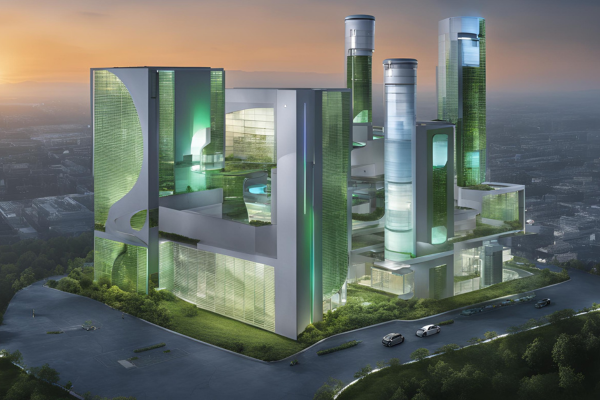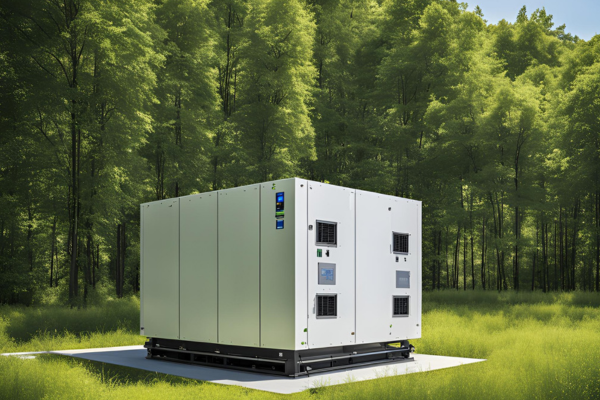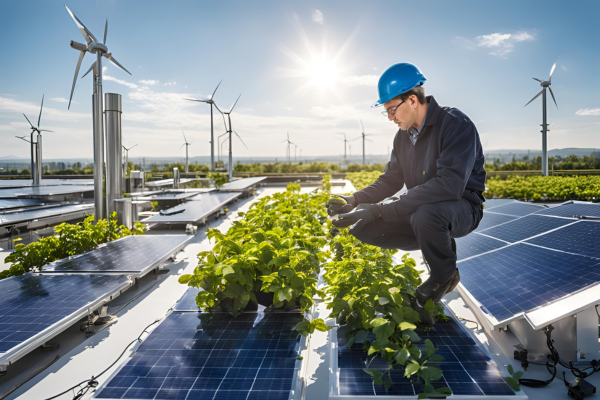Fuel cells have emerged as a pivotal technology in the quest for sustainable energy solutions. By converting chemical energy from fuels like hydrogen directly into electrical energy, fuel cells offer a clean and efficient alternative to traditional combustion-based power generation. This article delves into the latest trends in fuel cells technology, highlighting innovations, industry insights, and perspectives from thought leaders.
Evolution of Fuel Cell Technology
Fuel cells have undergone significant advancements since their inception. Early developments focused on basic electrochemical principles, but modern innovations have expanded their applications across various sectors.
Types of Fuel Cells
-
Proton Exchange Membrane Fuel Cells (PEMFC): Utilizing a solid polymer electrolyte, PEMFCs operate at relatively low temperatures (60–80°C). Their high power density and quick startup times make them ideal for transportation applications, including passenger vehicles and buses.
-
Solid Oxide Fuel Cells (SOFC): Operating at high temperatures (600–1,000°C), SOFCs use a solid ceramic electrolyte. They are suitable for stationary power generation and industrial applications due to their fuel flexibility, including the use of natural gas and biogas.
-
Alkaline Fuel Cells (AFC): Employing an aqueous alkaline electrolyte, AFCs are known for their high efficiency. Historically used in space missions, modern developments aim to reduce their sensitivity to carbon dioxide for broader terrestrial applications.
-
Phosphoric Acid Fuel Cells (PAFC): Using liquid phosphoric acid as the electrolyte, PAFCs operate at intermediate temperatures (150–200°C) and are primarily used in stationary power generation for commercial and industrial facilities.
-
Molten Carbonate Fuel Cells (MCFC): Operating at high temperatures (600–700°C) with a molten carbonate salt mixture as the electrolyte, MCFCs are designed for large-scale power generation and can internally reform hydrocarbons like natural gas.
Recent Technological Advancements
1. Enhanced Catalyst Efficiency
The high cost of platinum catalysts has been a significant barrier to fuel cell commercialization. Innovations in catalyst materials, such as the development of non-precious metal catalysts and platinum-alloy catalysts, have reduced reliance on platinum. Nanostructured catalyst designs have increased surface area, improving reaction kinetics and overall efficiency.
2. Improved Durability and Longevity
Advancements in materials science have led to the development of more robust membrane electrode assemblies (MEAs). Reinforced membranes and advanced ionomers enhance chemical and mechanical stability, extending the operational life of fuel cells. Improved water management and thermal regulation techniques prevent degradation and maintain performance over time.
3. Hybrid Systems Integration
Integrating fuel cells with energy storage systems like batteries and supercapacitors has resulted in hybrid configurations that capitalize on the strengths of each technology. In transportation, such systems provide the immediate power response of batteries with the sustained energy supply of fuel cells, optimizing performance and efficiency.
4. Miniaturization for Portable Devices
The trend toward miniaturization has enabled the development of micro fuel cells for portable electronics. These compact power sources offer longer operational times compared to traditional batteries and can be rapidly refueled, making them attractive for applications in remote areas and emergency situations.
Industry Trends Driving Fuel Cell Innovation
1. Decarbonization Initiatives
Global policies aimed at reducing greenhouse gas emissions are accelerating the adoption of fuel cell technologies. Governments are implementing carbon pricing, emission reduction targets, and incentives for clean energy projects, creating a favorable environment for fuel cell integration across various sectors.
2. Green Hydrogen Production
The sustainability of fuel cells is closely linked to the source of hydrogen. Advances in electrolysis technologies, powered by renewable energy sources, are making green hydrogen more economically viable. Scaling up green hydrogen production reduces the carbon footprint of fuel cells and supports broader energy transition goals.
3. Expansion in Transportation
Fuel cell electric vehicles (FCEVs) are gaining momentum, particularly in sectors where battery electric vehicles face limitations. Heavy-duty transportation, such as trucks, buses, and trains, benefits from the longer range and faster refueling times of fuel cells. Companies like Toyota are developing next-generation hydrogen fuel cell systems to enhance the decarbonization of commercial vehicles.
4. Stationary Power and Backup Systems
Fuel cells are increasingly being deployed for stationary power applications, providing reliable and clean energy for residential, commercial, and industrial users. Their scalability and ability to operate independently of the grid make them suitable for backup power systems, ensuring resilience against outages.
Perspectives from Industry Leaders
Prominent figures in the energy sector have recognized the transformative potential of fuel cells and hydrogen technology:
-
William Clay Ford, Jr., Executive Chairman of Ford Motor Company, stated, “I believe fuel cells could end the 100-year reign of the internal combustion engine.” This highlights the potential of fuel cells to revolutionize the automotive industry.
-
Dan Lipinski, former U.S. Representative, emphasized the strategic importance of hydrogen fuel cells: “As we explore ways to bring price relief and bolster our country’s energy independence, one significant energy source has emerged as a potential solution, hydrogen fuel cells.”
-
Jeremy Rifkin, economic and social theorist, discussed the broader societal impact: “The hydrogen economy will make possible a vast redistribution of power, with far-reaching consequences for society.”
-
President Moon Jae-in of South Korea, at the 2021 APEC CEO Summit, remarked, “As an economic forum that represents 61 percent of world GDP, APEC will stand at the forefront of cultivating the hydrogen economy ecosystem.”
These insights underscore the global recognition of fuel cells and hydrogen as pivotal components in achieving a sustainable energy future.
Fuel cell technology stands at the forefront of the transition toward sustainable energy solutions, offering the promise of efficient and clean power generation. However, its widespread adoption faces several challenges that need to be addressed to fully realize its potential.
Challenges in Fuel Cell Technology
1. High Production Costs
The economic competitiveness of fuel cells is significantly impacted by high production costs, primarily due to the use of expensive materials like platinum in catalysts and the complexity of manufacturing processes. Reducing these costs is essential for making fuel cells a viable alternative to traditional energy systems.
2. Durability and Longevity
Fuel cells must demonstrate long-term durability to be considered reliable for various applications. Degradation over time, influenced by factors such as catalyst poisoning and membrane wear, can lead to reduced performance and operational lifespan. Enhancing the robustness of fuel cell components is crucial for their commercial success.
3. Hydrogen Production and Infrastructure
The sustainability of fuel cells is closely linked to the source of hydrogen. Currently, a significant portion of hydrogen is produced from fossil fuels, which undermines the environmental benefits of fuel cells. Developing cost-effective and efficient methods for green hydrogen production, along with establishing a comprehensive refueling infrastructure, remains a significant hurdle.
4. Market Competition
Fuel cell technology faces competition from rapidly advancing battery technologies and the broader push for electrification, especially in the transportation sector. Batteries have seen significant improvements in energy density and cost reductions, posing a challenge to the adoption of fuel cells. Identifying niche applications where fuel cells offer distinct advantages is essential for their market penetration.
Opportunities in Fuel Cell Technology
1. Decarbonizing Heavy Industries
Fuel cells present a viable solution for reducing emissions in heavy industries such as steel production, chemical manufacturing, and refining. Their ability to provide high-temperature heat and power makes them suitable for industrial processes that are challenging to electrify.
2. Transportation Applications
While battery electric vehicles dominate the passenger car market, fuel cells offer advantages for heavy-duty transportation modes, including trucks, buses, and maritime vessels. Their longer range and faster refueling times make them well-suited for applications requiring extended operation without frequent stops.
3. Energy Storage and Grid Stability
Fuel cells can play a role in energy storage systems, particularly when integrated with renewable energy sources. They can convert excess electricity into hydrogen through electrolysis, which can later be used to generate power during peak demand periods, thereby enhancing grid stability and resilience.
4. Government Policies and Incentives
Supportive government policies, including subsidies, tax incentives, and research funding, can accelerate the development and adoption of fuel cell technologies. Collaborative efforts between public and private sectors are essential to overcome existing barriers and promote innovation in this field.
In conclusion, while fuel cell technology faces challenges related to cost, durability, infrastructure, and market competition, it also offers significant opportunities in industrial decarbonization, transportation, energy storage, and grid stability. Addressing these challenges through technological innovation, supportive policies, and strategic investments will be key to unlocking the full potential of fuel cells in driving a sustainable energy future.
Fuel cell technology stands at a pivotal juncture in the quest for sustainable and efficient energy solutions. Its evolution has been marked by significant advancements, yet it faces challenges that require strategic navigation.
Recent developments underscore both the potential and the hurdles within the industry. The bankruptcy of Nikola, a prominent hydrogen fuel-cell truck manufacturer, has cast doubts on the immediate viability of hydrogen-powered heavy-duty vehicles. Similarly, Bosch’s termination of its collaboration with Ceres Power on solid oxide fuel cell technologies highlights the volatility and uncertainties inherent in the sector.
The Wall Street Journal | The Times
Despite these setbacks, the intrinsic benefits of fuel cells—such as high energy efficiency, environmental friendliness, and versatility—remain compelling. Their application in decarbonizing heavy industries, providing reliable stationary power, and offering solutions for sectors where battery electrification is less feasible, like maritime and aviation, exemplifies their potential.The Verge
The path forward necessitates a multifaceted approach:
-
Technological Innovation: Continued research into cost-effective materials, enhanced catalyst performance, and system durability is essential. Addressing issues such as high production costs and component longevity will be critical for commercial viability. SpringerLink
-
Infrastructure Development: Building a robust hydrogen production and distribution network is paramount. Emphasizing green hydrogen production will align fuel cell technology with broader environmental goals.
International Energy Agency -
Policy Support and Collaboration: Government incentives, public-private partnerships, and international cooperation can accelerate adoption. Strategic investments and supportive policies will play a pivotal role in overcoming current barriers.
Directory of Open Access Journals

In conclusion, while challenges persist, the strategic integration of fuel cell technology into the global energy landscape offers a promising pathway toward a sustainable and resilient future creating new trends in fuel cells. By addressing existing obstacles through innovation, infrastructure, and policy, fuel cells can fulfill their potential as a cornerstone of clean energy solutions.




